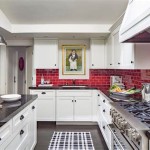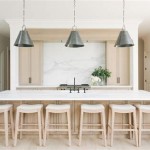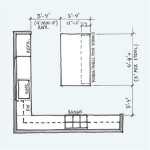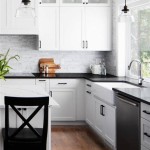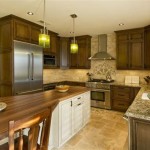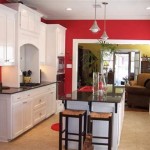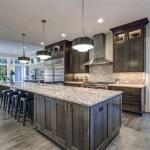What Is The Best Kitchen Cabinet Paint?
The selection of paint for kitchen cabinets is a crucial decision impacting both the aesthetic appeal and longevity of a kitchen. The best kitchen cabinet paint is not a single product but rather a choice that aligns with the cabinet material, desired finish, application method, and budget. Several factors contribute to determining the suitability of a particular paint, including durability, ease of application, cleanability, and the type of sheen it provides. A well-chosen paint can revitalize dated cabinets, protect them from the daily wear and tear of a busy kitchen, and significantly improve the overall look of the space. This article will delve into the different types of paint available, their specific characteristics, and key considerations for selecting the most appropriate paint for your kitchen cabinets.
Kitchen cabinets are subjected to frequent use, exposure to moisture, grease, and food splatters. Consequently, the paint used must be resilient and able to withstand these harsh conditions. The durability of the paint is paramount, as it will determine how well the finish holds up over time, resisting chipping, scratching, and fading. The ease of application is also a critical factor, especially for DIY projects. Paints that are easy to apply, level well, and offer good coverage can save time and effort, leading to a more professional-looking result. Furthermore, the ability to easily clean the painted surface is essential in a kitchen environment. A paint that can be wiped down without damaging the finish will maintain its appearance and prevent the build-up of grime.
The type of sheen chosen also has a significant impact on the look and feel of the kitchen. Different sheens, such as matte, satin, semi-gloss, and gloss, offer varying levels of reflectivity and durability. Matte finishes tend to be less durable and harder to clean but can hide imperfections, while gloss finishes are more durable and easier to clean but highlight any surface flaws. Selecting the right sheen is a delicate balance between aesthetics and practicality. Ultimately, choosing the best kitchen cabinet paint requires careful consideration of all these factors to achieve a finish that is both beautiful and long-lasting.
Understanding Different Types of Paint
The paint market offers various options, each with its unique properties and suitability for kitchen cabinets. The two primary categories are oil-based paints and water-based paints (latex and acrylic). Within these categories, there are also specialized paints formulated specifically for cabinets and furniture.
Oil-based paints have traditionally been favored for their durability and ability to create a smooth, hard finish. They offer excellent adhesion, making them suitable for cabinets that have been previously painted with oil-based paints. Oil-based paints also provide superior resistance to staining and water damage. However, they have several drawbacks. They have a strong odor during application and require mineral spirits or turpentine for cleanup. They also take longer to dry than water-based paints, potentially requiring more downtime for the kitchen. Furthermore, oil-based paints tend to yellow over time, particularly in areas with limited sunlight. Due to environmental concerns and the availability of improved water-based options, oil-based paints are becoming less common for kitchen cabinets.
Water-based paints, including latex and acrylic paints, are a more popular choice for kitchen cabinets due to their ease of use, low odor, and quick drying time. Latex paints are generally less expensive and offer good flexibility, making them less prone to cracking. Acrylic paints are known for their excellent adhesion, durability, and resistance to fading. They are also easier to clean up with soap and water. For kitchen cabinets, a 100% acrylic latex paint is often recommended for its superior performance. Water-based paints have significantly improved in recent years, offering comparable durability and a smoother finish than their oil-based counterparts. Many manufacturers now offer water-based paints specifically formulated for cabinets and trim, which provide enhanced hardness and resistance to chipping and scratching.
Specialized cabinet paints are designed to address the specific challenges of painting kitchen cabinets. These paints typically have a higher solids content, which means they provide better coverage and require fewer coats. They also often contain additives that improve adhesion, leveling, and durability. Some cabinet paints are formulated with a self-priming feature, eliminating the need for a separate primer coat. Others are designed to be applied directly to laminate or melamine surfaces, which can be difficult to paint with standard paints. These specialized paints often come with a higher price tag, but the improved performance and ease of use can justify the investment, especially for DIY projects.
Key Considerations for Selecting Paint
Choosing the right paint for kitchen cabinets involves careful consideration of several factors, including cabinet material, surface preparation, desired finish, and application method. A thorough assessment of these aspects will help ensure a successful and long-lasting paint job.
The material of the kitchen cabinets is a primary factor in determining the appropriate paint. Wood cabinets can be painted with a variety of paints, including oil-based, latex, and acrylic. However, proper surface preparation is crucial to ensure good adhesion. Laminate or melamine cabinets require specialized primers and paints that are designed to adhere to these non-porous surfaces. Metal cabinets may also require a specialized primer to prevent rust and ensure proper paint adhesion. Understanding the cabinet material and its specific requirements is essential for selecting the right type of paint and primer.
Surface preparation is perhaps the most critical step in painting kitchen cabinets. Proper preparation ensures that the paint adheres properly and creates a smooth, even finish. This typically involves cleaning the cabinets thoroughly to remove grease, dirt, and grime. A degreaser or TSP (trisodium phosphate) solution can be used for this purpose. Next, the cabinets should be sanded to create a slightly rough surface that will allow the primer and paint to adhere better. Any existing paint or varnish should be sanded down or removed completely. Gaps or imperfections in the cabinets should be filled with wood filler or caulk. Finally, a high-quality primer should be applied to seal the surface and provide a uniform base for the paint. Choosing the right primer is just as important as choosing the right paint, as it will significantly impact the final result.
The desired finish, including the sheen and color, is another important consideration. The sheen affects the appearance of the cabinets and their durability and cleanability. Matte finishes provide a soft, non-reflective look but are less durable and harder to clean. Satin finishes offer a good balance between durability and aesthetics. Semi-gloss finishes are more durable and easier to clean but can highlight imperfections. Gloss finishes are the most durable and easiest to clean but can be too shiny for some tastes. The choice of sheen should be based on personal preference and the overall style of the kitchen. The color of the paint should complement the existing décor and create the desired mood in the space. It is always a good idea to test paint samples in the kitchen before making a final decision.
The application method, whether by brush, roller, or sprayer, can also influence the choice of paint. Brush and roller applications are suitable for smaller projects and DIYers. They require more time and effort but can produce excellent results with careful technique. Spraying provides a smoother, more even finish and is generally preferred for larger projects or when a professional finish is desired. However, spraying requires specialized equipment and proper ventilation. Some paints are better suited for spraying than others, so it is important to check the manufacturer's recommendations. Regardless of the application method, multiple thin coats of paint are always better than one thick coat, as they will result in a more durable and professional-looking finish.
Exploring Paint Finishes and Their Impact
The finish of kitchen cabinet paint extends beyond color; it also encompasses the sheen level, impacting the overall aesthetic and functional aspects of the kitchen space. Different sheen levels offer varying degrees of reflectivity, durability, and ease of maintenance, making it essential to understand their characteristics before making a final selection.
Matte finishes, characterized by their lack of shine, are often chosen for their ability to conceal imperfections on cabinet surfaces. This makes them suitable for older cabinets with minor dents or scratches. However, matte finishes are less durable and more porous than other options, making them more susceptible to staining and difficult to clean. They are generally not recommended for high-traffic areas or surfaces that are frequently exposed to moisture or grease. Matte finishes create a soft, understated look that can be appealing in certain kitchen styles, such as farmhouse or traditional designs.
Satin finishes strike a balance between matte and semi-gloss, offering a subtle sheen that is both visually appealing and relatively durable. Satin paints are easier to clean than matte finishes and provide better resistance to stains and scratches. They are a popular choice for kitchen cabinets due to their versatility and ability to complement a wide range of kitchen styles. Satin finishes are also less likely to highlight imperfections than higher-gloss options. They provide a smooth, elegant look that is suitable for both modern and traditional kitchens.
Semi-gloss finishes offer a noticeable sheen that enhances the brightness and reflectivity of the kitchen. They are more durable and easier to clean than matte and satin finishes, making them a practical choice for high-use areas. Semi-gloss paints are resistant to moisture, grease, and stains, making them ideal for kitchen cabinets that are frequently exposed to these elements. However, they can highlight imperfections on cabinet surfaces, so careful surface preparation is essential. Semi-gloss finishes are often used in modern or contemporary kitchens, where a clean, polished look is desired.
Gloss finishes provide the highest level of sheen and reflectivity, creating a dramatic and eye-catching effect. They are the most durable and easiest to clean of all the sheen levels, offering excellent resistance to moisture, grease, and stains. Gloss paints are ideal for kitchen cabinets that require frequent cleaning and are subject to heavy use. However, they can magnify any imperfections on cabinet surfaces, so meticulous surface preparation is crucial. Gloss finishes are often used in high-end kitchens or for creating a bold, contemporary look.

How To Paint Kitchen Cabinets Like The Pros

What Is The Best Paint To Use On Kitchen Cabinets

Interior Designers Share Best Kitchen Cabinet Paint Colours To Update Tired Designs Express Co

The Best Paint For Your Cabinets 7 Options Tested In Real Kitchens

How To Paint Kitchen Cabinets Best Color Ideas Cost

How To Paint Kitchen Cabinets Like The Pros

The Best Kitchen Cabinet Paint Brand Honest Review

What Is The Best Spray Paint On Kitchen Cabinets

Best Paint Color For Kitchen Cabinets

The Best Non White Kitchen Cabinet Paint Colors From Experts Zhush

